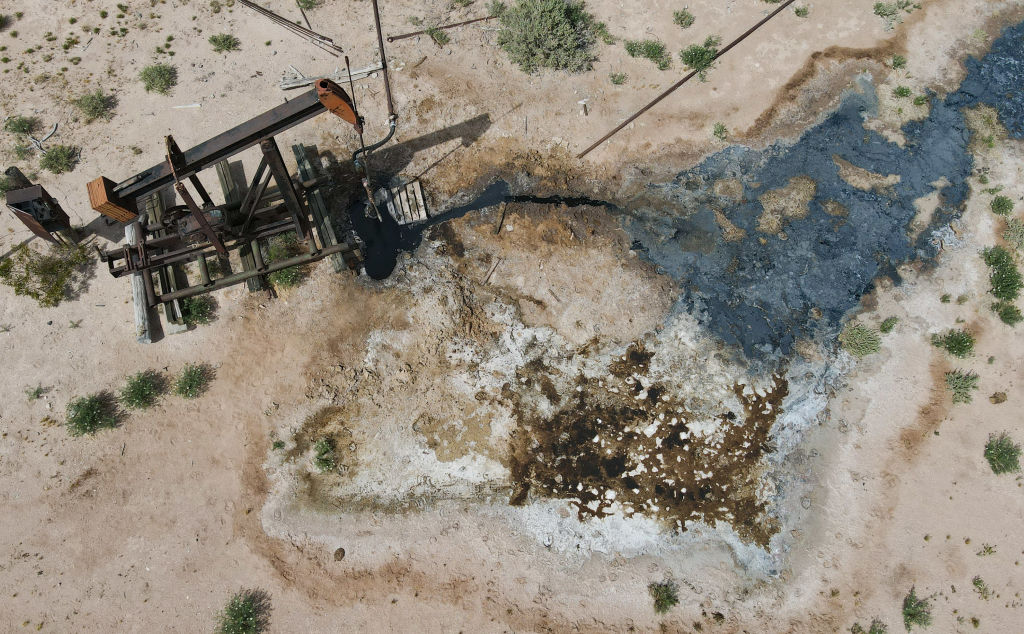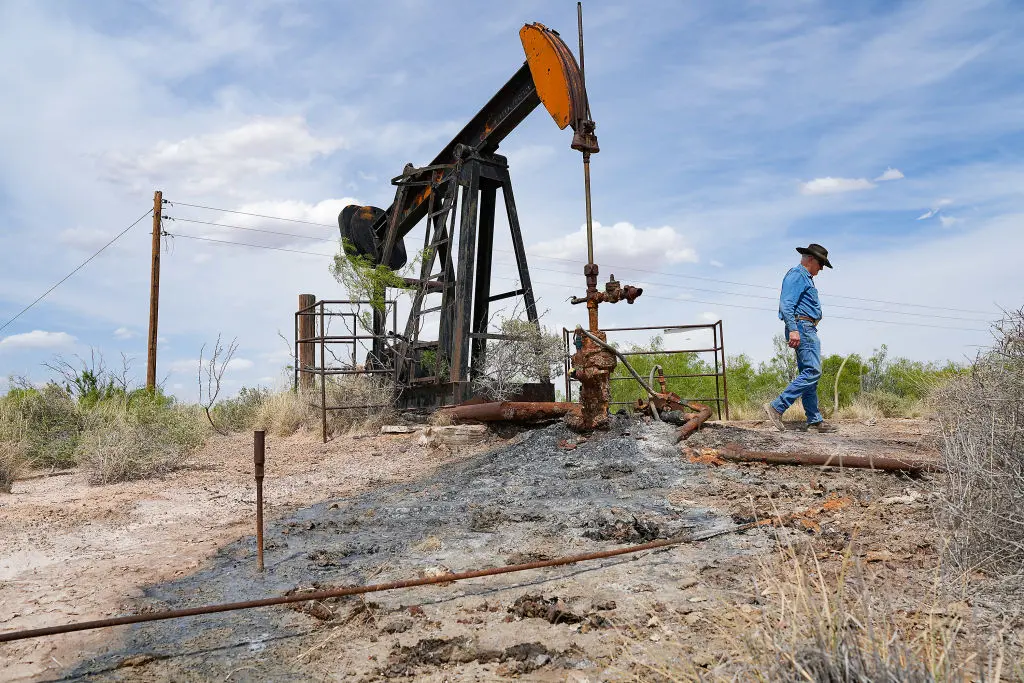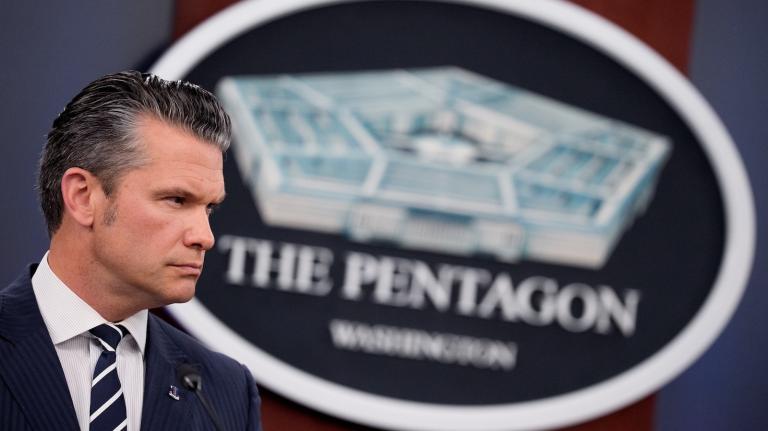The environmental harm of oil and gas wells doesn’t end when the pumping stops. If disused wells remain unplugged — the term of art for closing them up with concrete and remediating the environment around them — they can leach toxic chemicals and spew planet-warming methane into the air. Some 3 million such wells dot the U.S., and the companies responsible for them have often fled the scene. In recent years, Congress has poured billions of dollars into cleaning up the mess, giving rise to a niche industry of hardscrabble well pluggers across the country.
But all that money still isn’t anywhere close to enough, which is why carbon credit developers are also getting in on the action. A handful of private companies and nonprofits are now attempting to use the voluntary carbon market — which sells emissions-reducing schemes to institutions attempting to meet their climate goals by cutting down on carbon pollution other than their own, essentially — as a source of funding for cleanups of these orphan wells.
Here’s how it’s supposed to work: The amount of methane leaking out of a given well can vary dramatically, so carbon credit developers first identify high emitters. They secure access to the well from landowners, obtain the right to operate and plug the well from regulators, measure the amount of methane being released, plug the well, and estimate the amount of emissions avoided as a result of their work.
The methodology for this last, crucial calculation varies depending on the standards that the developer decides to adhere to. If the standard setter requires independent verification, the developer also hires a certification firm to audit the emissions calculation. Once the developer clears these hurdles, the standard setter issues the equivalent carbon credits into the voluntary carbon market where companies — think data centers, automobile manufacturers, and any corporate actor making promises to green their operations — can purchase them.
Nearly 5 million credits have been generated since the first project was issued in the summer of 2023. While it’s unclear exactly if and how much these credits sold for, experts told Grist it’s reasonable to assume that they can fetch at least $10 to $30 per credit, each of which constitutes 1 metric ton of avoided carbon dioxide emissions.
There’s clearly money to be made through the voluntary carbon market for orphan well cleanups, but the exact environmental benefits are less certain. For one, the amount of methane emissions avoided as a result of plugging a well is difficult to estimate, in part because leakage rates decline at an uncertain pace over time, as more natural gas escapes from a well and the pressure underground decreases. Some wells leak significant amounts in short bursts, while others pollute gradually. And even when a well is plugged, it’s not entirely clear that the methane will remain trapped underground. In some cases, it could bubble up from neighboring leaky wells.
“There are a lot of hurdles that you have to get over in order for those [carbon] credits to be any good,” said Adam Peltz, a director and senior attorney at the nonprofit Environmental Defense Fund. “And some of those hurdles require a lot of thinking and vigilance.”
When it comes to verifying the credibility of carbon offsets, the American Carbon Registry is the most prominent standard setter. The program, founded in 1996, has developed a methodology for estimating the climate benefits of reducing emissions from landfills, restoring wetlands, and planting trees, among other activities. Since establishing a set of standards for evaluating oil and gas well pluggings in May 2023, the Registry has issued more than half of the nearly 5 million credits generated by the industry so far. The other major standard setters are CarbonPath and BCarbon.
As for calculating the amount of methane pollution avoided when a leaky well is plugged, each standard setter has a different approach. This leads to different assessments of the number of credits that can be issued for a particular project. A key difference lies in each setter’s assessment of methane’s potential to heat the planet. Once it’s in the atmosphere, methane degrades into less potent greenhouse gases in about a decade. That means that its warming power, compared to that of carbon dioxide, is highly dependent on the timescale one chooses: Methane’s warming potential is about 80 times greater than carbon dioxide’s over a 20-year timeframe, but roughly 27 times greater over a 100-year timeframe. In calculating methane’s potential to warm the planet, BCarbon uses a 20-year timeframe while the Registry and CarbonPath use a 100-year timeframe. Because it’s using a shorter time horizon, BCarbon issues more credits.
The standard setters also use different time horizons to estimate the period over which methane emissions are avoided as a result of a well plugging. CarbonPath assumes that by plugging a well, the developer helped protect the planet from up to 50 years of methane emissions. The other two standard setters use a period of 20 years.
Brad Handler, a researcher and program director of the Energy Finance Lab at the Colorado School of Mines, suggested that the methodologies might come closer together as more data is gathered. “I can’t sit here and tell you that one is wrong,” he said. “As buyers get more educated about all of it, the methodology may be refined.”
In the meantime, it’s entirely possible that developers are overestimating the planetary benefits of plugging wells — and in turn helping corporations overstate their progress on their climate goals. Peltz, the Environmental Defense Fund attorney, said there was little reasoning behind assuming that emissions were avoided over 50 years rather than 20 years. “I’m hard-pressed to see a basis other than generating more credits for the same activity,” he said.
Concerns about overcrediting are already circulating about at least one project. Last year, a company called Rebellion Energy Solutions plugged six orphaned wells in Oklahoma and estimated that the wells leaked between 2.7 and 285 kilograms of methane per hour. Based on two measurements taken 30 days apart, Rebellion calculated an average methane leak rate of 68 kilograms per hour. Those numbers are orders of magnitude higher than the values measured by researchers. Most studies have found that unplugged orphan wells emit 10 to 30 grams of methane per hour. One study in Colorado estimated an average leak rate of 586 grams per hour and identified one instance of a super-emitting well releasing 76 kilograms per hour.
Rebellion issued nearly 1.9 million credits for the project — more than a third of all credits issued so far. BeZero Carbon, a global carbon credits rating agency, found that the project likely overestimated the amount of methane released. (A spokesperson for BeZero said the firm doesn’t comment on specific ratings.)
“The values recorded by the project may reflect the worst-case-scenario baseline; a scenario that may not come to pass,” the ratings firm noted, adding that the project “faces significant over-crediting risk as a result of uncertainties regarding the project’s modeling of baseline methane leakage rates.”
But Staci Taruscio, Rebellion’s CEO, said that the high leakage rate in the pool of wells they’ve plugged so far is in part because the company spends significant time and resources to identify high emitters. Rebellion staff conduct analyses to select wells that have historically produced natural gas and are likely to hold reserves underground that can leak. They also sign agreements with landowners giving them access to wells that academics typically can’t reach when collecting standard measurements. The company measured methane levels at roughly 3,000 wells before selecting the dozen or so highest emitters that they’ve plugged so far, said Taruscio, who worked most of her career in the oil and gas industry.
“We have a lot of tools in our tool belt to identify those [high-emitting wells],” she said. “If you think of the oil and gas industry, our entire existence depends upon finding reservoirs with energy. That’s all we’re doing.”
Taruscio said she was “shocked” by BeZero Carbon’s rating and has submitted the methane measurements from the other 3,000 wells for the agency to reconsider its finding. “We realized a big part of their rating was because they haven’t seen all the wells that weren’t included,” she said.
Taruscio said that, given the novel nature of carbon credits for plugging wells, developers, standard setters, certifiers, and rating agencies are all still moving up the learning curve.
“There are bad actors out there,” she said. “So everybody just has to be really cautious at this point so that we don’t let bad projects through.”
Editor’s note: The Environmental Defense Fund is an advertiser with Grist. Advertisers have no role in Grist’s editorial decisions.





